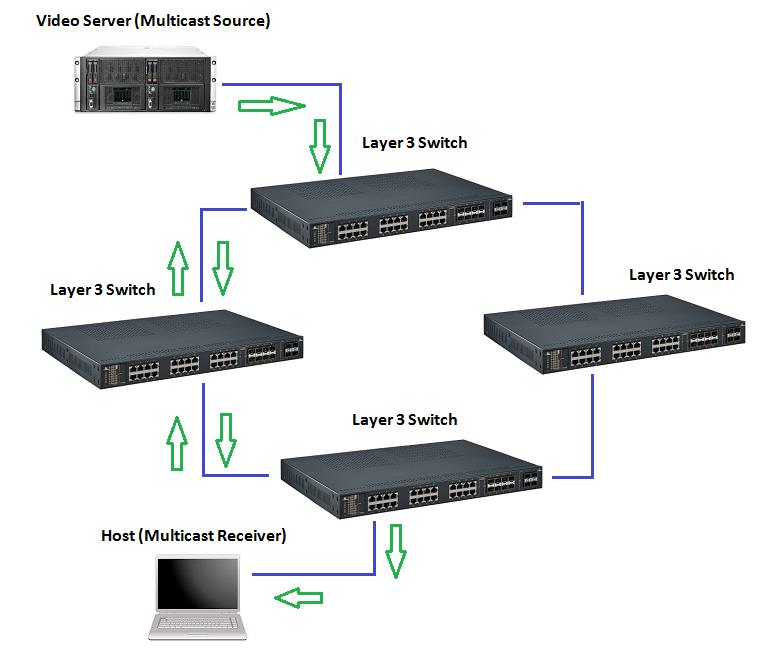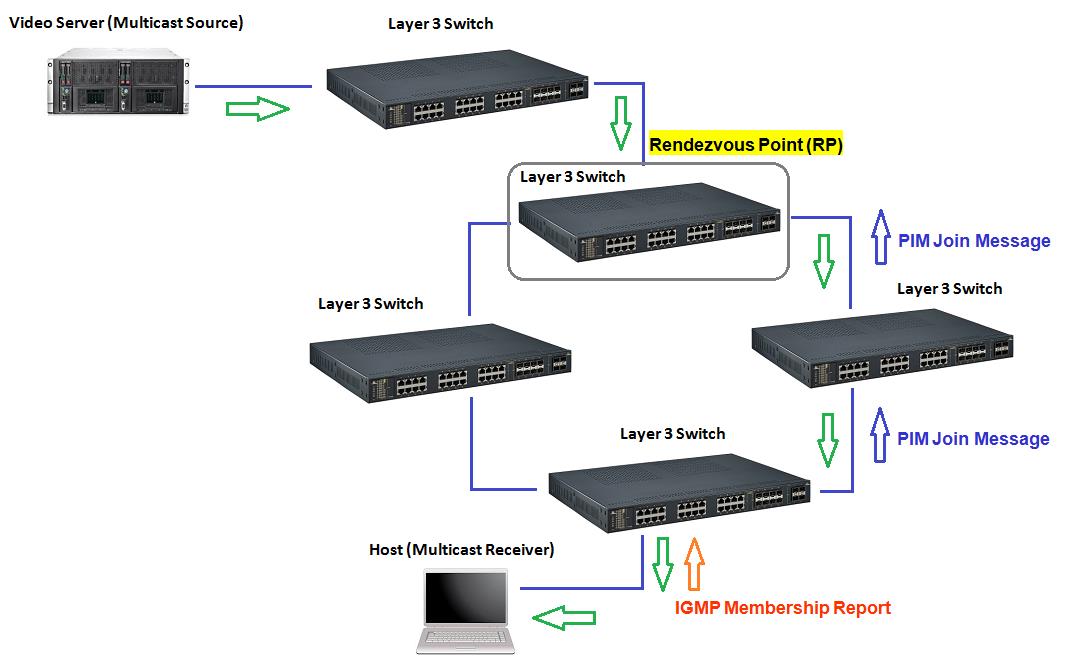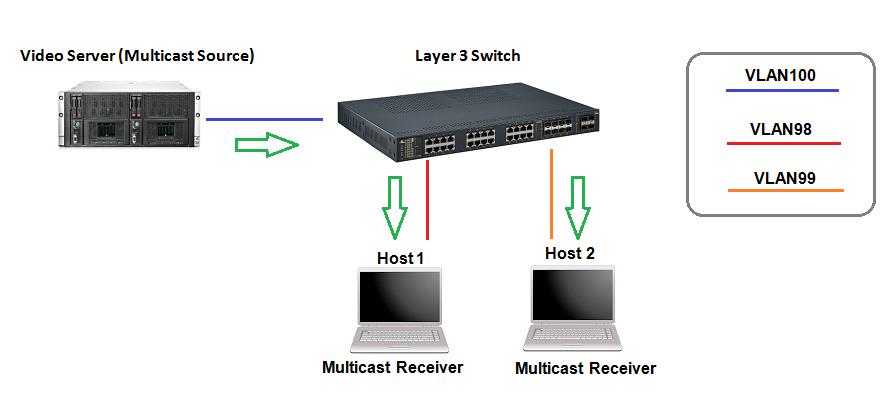What are the most commonly used multicast IPv4 routing protocols along with the modes of operation?
Answer:
Protocol Independent Multicast (PIM) and Multicast VLAN Registration (MVR) are the most commonly used multicast IPv4 routing protocols. These protocols have their own mode of operation, as described in more detail below.
1. PIM Dense Mode (PIM-DM)
The multicast stream is initially flooded throughout the entire network as shown in Figure 1.
Figure 1 The following green arrows represent the multicast stream.

If the multicast stream is not needed by any switch’ s interface because there is no any downstream switch or any host that wants to receive the multicasts, a prune message will be sent out to its neighboring switch asking to stop forwarding the multicast stream, as shown in Figure 2.
Figure 2 The following red arrows represent the prune messages.

After forwarding these prune messages, the final outcome is shown in Figure 3.
Figure 3

2. PIM Sparse Mode (PIM-SM)
A switch that receives a multicast stream from a video server will forward the stream directly to another switch configured as a Rendezvous Point (RP). If a switch receives an IGMP membership report from a host, it will send out a PIM Join message to an upstream switch which will also send out a PIM Join message to the RP in order to request a multicast stream, as shown in Figure 4.
Figure 4

3. Multicast VLAN Registration (MVR)
The MVR protocol allows a multicast stream transmitted from a video server in a multicast VLAN to be distributed across other VLANs. In Figure 5, Host 1 and Host 2 receive the same video stream coming from the multicast VLAN100; however, Host 1 and Host 2 reside in different VLAN.
Figure 5, the green arrow represents the multicast stream.






